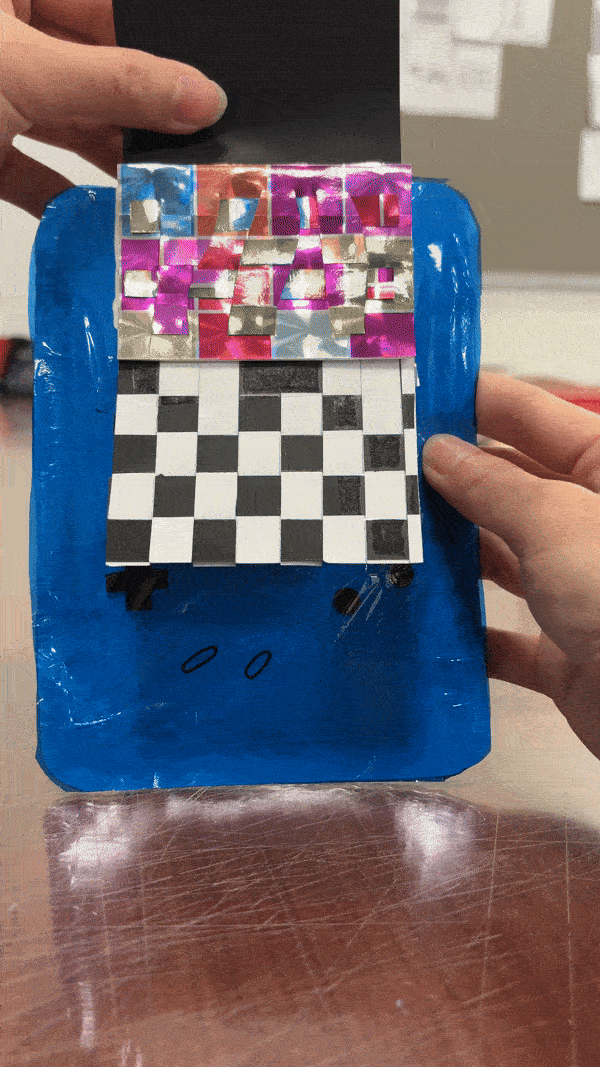top of page
01
Cutting paper into strips.
I experimented with 4 different types of paper
ranking from lowest to highest gsm
1. Tracing Paper
2. A4 Paper
3. Coloured Paper
4. Mirror Paper
2. A
Triaxial Weaving
I jumped straight into making the 3D cube during the first lesson :'D
Time taken: Entire lesson
1st hour in: I wanted to give up, it was a repetition of down-down-up-down-down
2nd hour in: muscle memory, I can't explain how I am doing it but my fingers and brain are somehow working together to form this cube shape, slowly and surely.
3rd hour in: still sane :D Ray this is the last step, this is a cube so give the cubes a cap.
I used the mirror paper, purple coloured paper and white A4 paper to create this pattern. It was interesting how the mirror paper gave this weave pattern a structure else it would have been more flimsy.
However, there were a few accidents along the way where the thinner paper strips tore at the edges as I tried to weave and I have to apply some clear tape as reinforcement.



Pattern Weaving
I used different colour highlighters to draw random streaks on A4 paper to form a colourful pattern and then cut it up to form strips.
In this weaving pattern I was trying to learn how I can skip multiple boxes and to mirror the pattern.

Putting it all together

after every Drawing & Making class
Theme chosen: Gameboy
As I chose this theme, I wanted to incorporate some "kinetic" element to it to allow people to "play" with it - i mean it's a gameboy. So this is my process of making a paper gameboy card with waterfall mechanism.

What went wrong and what I learnt from this?
1. Choice of paper
I decided to use this plastic translucent card thinking that it will work well as screen but it was too thick to fold which prevented the "waterfall" mechanism from working.
so I had to redo and had to experiment along the way with the different paper thicknesses but I now know that cardstock paper will not work for such mechanism.
Gameboi

Gameboy Body: I wrapped it with blue cellophane paper to create this plastic like effect.
Controls: Hand-drawn controls
Waterfall Mechanism:
1st Slide: Shiny Retro Print paper from Daiso
2nd Slide: Checkered Prints
I wanted to incorporate patterns and textures that reminds us of 90s nostalgia like the checkered prints and shiny paper pattern.
3rd Slide: Tetris
I used cellophane paper to weave the individual pieces. This tested my patience. It was too thin that it was very hard to weave and kept sticking onto my fingers instead.



Reflection
This activity was fun. It was interesting how paper weaving can bring much life and beauty to strips of waste paper. It has also made me more sensitive towards paper thickness - thinking twice about whether the paper is too thick or thin before using it.
bottom of page